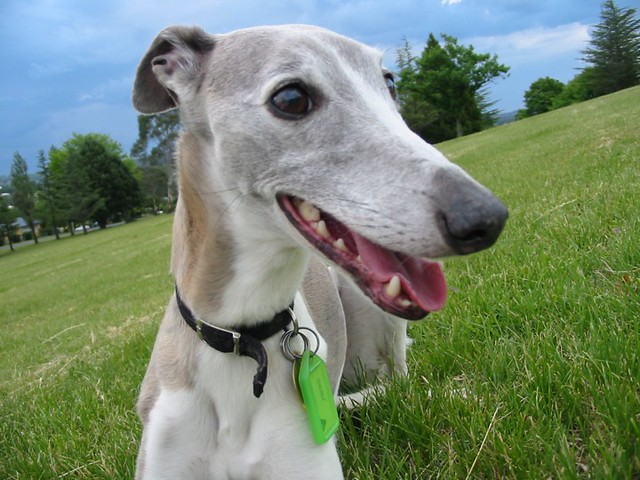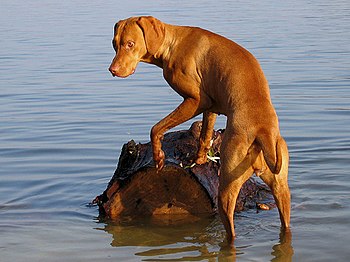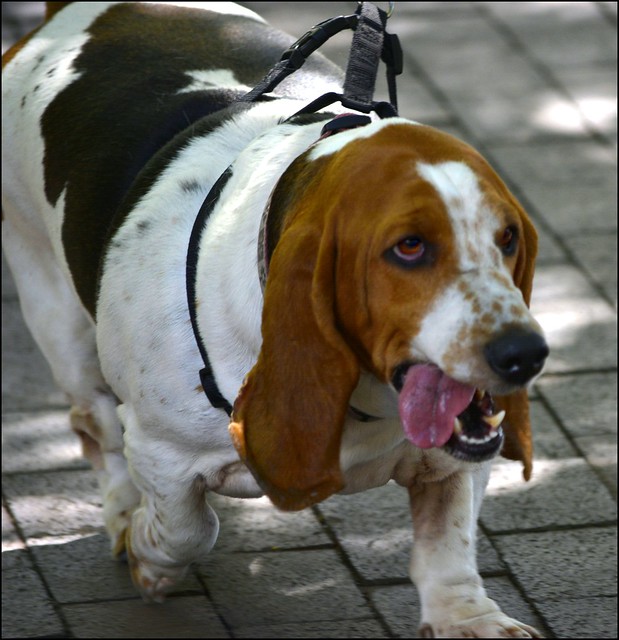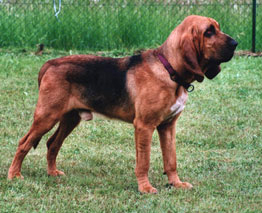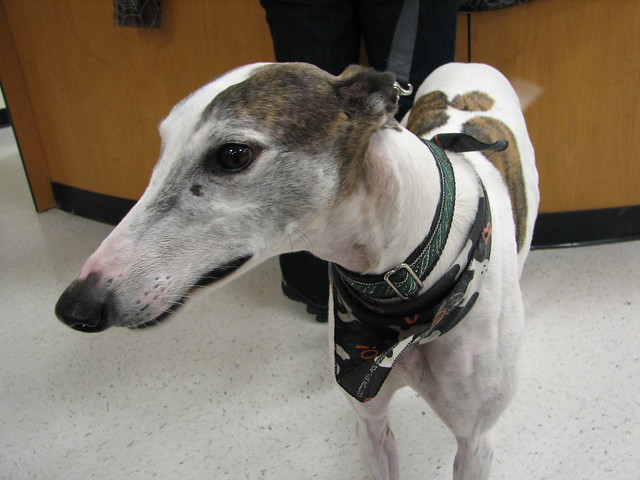 |
| A black Great Dane (Deutsche Dogge). (Photo credit: Wikipedia) |
The oldest ancestors of the Great Dane were known as "Bullenbeissers". The Bullenbeisser had its origins in early Germanic cultures. Also known as the "Deutsche Dogge", or "German Dog", the Bullenbeisser closely resembled the breed we call the Mastiff and was the original dog used to breed the many Mastiff variations. Since mankind's early history, dogs with Bullenbeisser strains benefited men like war and guard dogs. Eventually, they became "Molossian Dogs" after the ancient Grecian city.
According to literary references, the massive Bullenbeisser was the most used guard dog in Germany throughout the middle ages. Their original purpose, however, was that of highly efficient hunting dogs. They were extremely adept at chasing and bringing down wild boar, as well as wolves, elk and cattle. As wild boar became scarce, so did the need for these dogs as hunting dogs.
Interestingly, Dane-like dogs were also used extensively as offensive weapons long before gunpowder was ever thought of being invented. Their early ancestors wore armour consisting of jointed plates of metal with a light chain mail vest. It was common to see these dogs with a huge spike attached to their armour. Great figures of history, such as Attila the Hun, protected their camps from surprise enemy attacks by enlisting these massive, ferocious and courageous armour-plated dog warriors. In his battle against Francis I, Charles V of Spain used nearly five hundred of these fearsome dogs as soldiers. Meanwhile, in the British Isles, dogs of the same breed stock were becoming the English Mastiff. Cross-breeding with Greyhounds and Irish Wolfhounds altered the basic Bullenbeisser genetic pattern. These offspring were eventually to become the Great Dane.
Around the middle of the 19th century, in England and the rest of Europe, the sport of competitive dog shows brought about the pure-bred modern Great Dane. With the breed enjoying enormous growth and popularity, the first Great Dane Club began in England in 1883. By 1888, the German Deutsche-Doggen club was newly formed and they are responsible for selectively breeding toward the ideal Great Dane. In northern Germany, the dogs were aggressive, very heavy and had a coarse coat. Their southern counterparts were milder of temperament, slender and lighter. The best traits between the northern and southern types became the breed standard. Detailed records of pedigrees, breeding practices and prize-winners were kept, allowing for further recognition of the breed.
In 1857, Mr Francis Butler imported a Harlequin Dane named Prince into the United States from London. However, the first time a dog entered the show ring as a "Great Dane" was only in 1886. These early American Danes were totally unmanageable as they were so aggressive. Due to their volatile nature, they were not welcome in any American Dog Shows during this period. Their job of hunting by day and guard dogs by night had ensured an aggressive temperament. The early American breeders are responsible for actively subduing their aggressive tendencies, by painstakingly breeding selective pairs of milder mannered Danes.
Due to the dedication, responsibility and concern that Great Dane breeders have shown in improving the breed, Great Danes are now known globally for their gentle natures. Their extreme size, loyalty, devotion and intelligence have earned them the titles of "Gentle Giants" and "Apollo of Dogs."
|

